Canada’s healthcare system is facing a critical shortage of skilled professionals. This presents a golden opportunity for foreign-trained medical professionals like you. Imagine contributing your expertise to a world-class healthcare system, while enjoying a high quality of life in a welcoming and diverse country.
But navigating the immigration process can seem daunting. This guide is here to illuminate the path, offering clear and comprehensive information to help you achieve your Canadian dream.
1. Do You Have What it Takes?
Before you begin, it’s essential to assess your eligibility. Here are the key factors:
- Education: A recognized medical degree from an accredited institution in your home country is a must.
- Language Proficiency: Canada has two official languages, English and French. You’ll need to demonstrate strong proficiency in at least one of them. Standardized tests like IELTS or CELPIP are commonly used to assess language skills.
- Work Experience: Relevant work experience in your field is typically required. The specific amount and type of experience may vary depending on the immigration program and your profession.
- Adaptability: Canada values individuals who can successfully integrate into its society and contribute to its diverse cultural landscape. Be prepared to demonstrate your adaptability and willingness to embrace Canadian values.
2. Mapping Your Route: Immigration Pathways
Several pathways can lead you to your goal of practicing medicine in Canada. Here are the most common ones for healthcare professionals:
- Express Entry: This is a fast-track system for skilled workers, managing applications for three federal economic immigration programs. As a medical professional, you’ll likely apply under the Federal Skilled Worker Program. It uses a points-based system called the Comprehensive Ranking System (CRS) to assess candidates.
- Provincial Nominee Programs (PNPs): Each province and territory has its own programs tailored to their specific needs. Many have streams specifically designed to attract healthcare professionals. These programs often offer a faster processing time and may have less stringent requirements than federal programs.
- Temporary Work Permits: These allow you to work in Canada for a specific period. While temporary, they can provide valuable Canadian work experience and potentially lead to permanent residency.
3. Unlocking the Door: Licensing and Credential Recognition
To practice your profession in Canada, you must have your qualifications recognized. This involves navigating a process that varies depending on your profession:
- Identifying the Regulatory Body: Each profession has a regulatory body that sets standards and issues licenses (e.g., the Medical Council of Canada for physicians, the National Nursing Assessment Service (NNAS) for nurses).
- Undergoing an Assessment: This typically includes submitting your credentials, completing exams, and proving language proficiency. The assessment process ensures that your qualifications meet Canadian standards.
- Meeting Licensing Requirements: You may need to take additional courses, complete a bridging program, or pass licensing exams specific to your profession and the province where you intend to practice.
4. Your Support System: Resources for Success
The immigration journey can be complex, but you don’t have to navigate it alone. Numerous resources are available to help you:
- Government Websites: Immigration, Refugees and Citizenship Canada (IRCC) and provincial government websites provide a wealth of information on immigration programs, requirements, and application procedures.
- Professional Organizations: Organizations like the Canadian Medical Association (CMA) and the Canadian Nurses Association (CNA) offer guidance and support to foreign-trained professionals, helping them navigate the licensing process and integrate into the Canadian healthcare system.
- Immigration Consultants: Regulated Canadian immigration consultants can provide personalized advice and assistance with your application, ensuring you meet all the requirements and submit a strong application.
5. Finding Your Place: Top Provinces for Healthcare Workers
While opportunities exist across Canada, some provinces have a particularly high demand for healthcare professionals:
- Ontario: As Canada’s most populous province, Ontario faces a significant shortage of doctors, nurses, and specialists.
- British Columbia: With a growing and aging population, British Columbia offers excellent opportunities for healthcare professionals in both urban and rural areas.
- Nova Scotia: This Atlantic province is actively recruiting healthcare workers, particularly in rural communities, and offers attractive incentives.
- Alberta: Alberta’s strong economy and expanding healthcare system create a demand for various medical professionals, including physicians, nurses, and allied health professionals.
Embark on Your Canadian Adventure!
Immigrating to Canada as a medical professional is a significant decision, but it’s also an incredibly rewarding one. By carefully planning your journey, understanding the requirements, and utilizing the available resources, you can successfully navigate the immigration process and embark on a fulfilling career in Canada’s world-class healthcare system.



